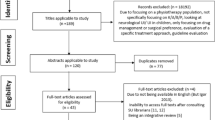Abstract
Introduction and hypothesis
Urinary incontinence (UI) is prevalent during pregnancy and negatively affects quality of life. Despite this, few women seek professional assistance during prenatal care. Assessing the knowledge, attitude and practice (KAP) of pregnant women related to UI can contribute to the development and improvement of the quality of interventions performed during this period. For this, it is essential to apply targeted and valid instruments for this population. Thus, the present study aimed to construct and validate the content of a scale to evaluate the KAP of pregnant women related to UI.
Methods
Extensive literature review guided the operationalization of the instrument’s initial items. Ten experts were selected for the theoretical analysis of the items, which was carried out using the Delphi technique, and the analysis of semantic adequacy proceeded from the application of the scale to 30 pregnant women. The data were analyzed using the content validity coefficient and kappa coefficient.
Results
The proposed Scale of Pregnant Women’s Assessment of Knowledge, Attitude and Practice related to UI was approved by consensus by the experts, with a mean Cohen’s kappa of 0.84 (p < 0.01), comprising 23 items.
Conclusions
The results of the study confirm that the presented scale can be used as a valid tool to assess the KAP of pregnant women related to UI.



Similar content being viewed by others
References
Abrams P, Cardozo L, Wein A, Wagg A. Incontinence: 6th International Consultation on Incontinence, Tokyo, Japan, September 2016; 2017. https://www.ics.org/publications/ici_6/Incontinence_6th_Edition_2017_eBook_v2.pdf. Accessed 10 Aug 2020.
Saboia DM, Firmiano MLV, Bezerra KC, Vasconcelos Neto JA, MOB O, Vasconcelos CTM. Impacto dos tipos de incontinência urinária na qualidade de vida de mulheres. Rev Esc Enferm USP. 2017;51:1–8. https://doi.org/10.1590/s1980-220x2016032603266.
Sangsawang B, Sangsawang N. Stress urinary incontinence in pregnant women: a review of prevalence, pathophysiology, and treatment. Int Urogynecol J. 2013;24(6):901–12. https://doi.org/10.1007/s00192-013-2061-7.
Serati M, Salvatore S, Khullar V, et al. Prospective study to assess risk factors for pelvic floor dysfunction after delivery. Acta Obstet Gynecol Scand. 2008;87(3):313–8. https://doi.org/10.1080/00016340801899008.
Balik G, Güven ESG, Tekin YB, et al. Lower urinary tract symptoms and urinary incontinence during pregnancy. Low Urin Tract Symptoms. 2016;8(2):120–4. https://doi.org/10.1111/luts.12082.
Panayi DC, Khullar V. Urogynaecological problems in pregnancy and postpartum sequelae. Curr Opin Obstet Gynecol. 2009;21(1):97–100. https://doi.org/10.1097/GCO.0b013e328321e44b.
Viktrup L, Rortveit G, Lose G. Risk of stress urinary incontinence twelve years after the first pregnancy and delivery. Obstet Gynecol. 2006;108(2):248–54. https://doi.org/10.1097/01.AOG.0000226860.01127.0e.
Viktrup L, Lose G. The risk of stress incontinence 5 years after first delivery. Am J Obstet Gynecol. 2001;185(1):82–7. https://doi.org/10.1067/mob.2001.114501.
Mclennan MT, Melick ÆCF, Alten ÆB, Young J, Hoehn ÆMR. Patients’ knowledge of potential pelvic floor changes associated with pregnancy and delivery. Int Urogynecol J Pelvic Floor Dysfunct. 2005;17:22–6. https://doi.org/10.1007/s00192-005-1325-2.
Fine P, Burgio K, Borello-France D, et al. Teaching and practicing of pelvic floor muscle exercises in primiparous women during pregnancy and the postpartum period. Am J Obstet Gynecol. 2007;197(1):107.e1–5. https://doi.org/10.1016/j.ajog.2007.02.052.
Kara KC, Çıtak Karakaya İ, Tunalı N, Karakaya MG. Reliability and validity of the incontinence quiz–Turkish version. J Obstet Gynaecol Res. 2018;44(1):144–50. https://doi.org/10.1111/jog.13469.
Rav-Marathe K, Wan TTH, Marathe S. A systematic review on the kap o framework for diabetes education and research; 2016. Medical Research Archives, [Online] 3:9. Available at: <https://journals.ke-i.org/mra/article/view/483>
Vasconcelos CTM, Firmiano MLV, Oriá MOB, et al. Women’s knowledge, attitude and practice related to urinary incontinence: systematic review. Int Urogynecol J. 2019;30:171–80. https://doi.org/10.1007/s00192-018-3759-3.
Pasquali L. Instrumentação Psicológica: Fundamentos e Práticas. Porto Alegre: Artmed; 2010.
Scarparo AF, Laus AM, Azevedo ALCS, Freitas MRI, Gabriel CS, Chaves LDP. Reflexões sobre o uso da técnica Delphi em pesquisas na enfermagem. Rev Rene. 2012;3(1):242–51.
Grant JS, Davis LL. Selection and use of content experts for instrument development. Res Nurs Health. 1997;20(3):269–74.
Davis LL. Instrument review: getting the most from a panel of experts. Appl Nurs Res. 1992;5(4):194–7. https://doi.org/10.1016/S0897-1897(05)80008-4.
Fleiss JL, Bruce L, Paik MC. Statistical methods for rates and proportions: Wiley; 2003. https://doi.org/10.1002/0471445428.
Ribeiro GL, Vasconcelos CTM, Gomes MLS, Firmiano MLV, Oriá MOB, Lopes LG. Knowledge, attitude, and practice instruments for urinary incontinence: a psychometric review. Neurourol Urodyn. 2019;39(1):25–34. https://doi.org/10.1002/nau.24202.
Branch LG, Walker LA, Wetle TT, DuBeau CE, Resnick NM. Urinary incontinence knowledge among community-dwelling people 65 years of age and older. J Am Geriatr Soc. 1994;42(12):1257–61. https://doi.org/10.1111/j.1532-5415.1994.tb06507.x.
Zhang N, He Y, Wang J, Zhang Y, Ding J, Hua K qin. (2016) Effects of a new community-based reproductive health intervention on knowledge of and attitudes and behaviors toward stress urinary incontinence among young women in Shanghai: a cluster-randomized controlled trial. Int Urogynecol J 27(4):545-553. https://doi.org/10.1007/s00192-015-2851-1.
Perera J, Kirthinanda DS, Wijeratne S, Wickramarachchi TK. Descriptive cross sectional study on prevalence, perceptions, predisposing factors and health seeking behaviour of women with stress urinary incontinence. BMC Womens Health. 2014;14(1):1–7. https://doi.org/10.1186/1472-6874-14-78.
Guillen Lopez O, Llanos Zavalaga F, Lecca Garcia L. Conocimientos sobre incontinencia urinaria en pacientes hospitalizados. Rev Med Hered. 2003;14(4):186–94 file:///scielo.php?script=sci_arttext&pid=S1018130X2003000400007&lang=pt.
De Gagne JC, So A, Wu B, Palmer MH, McConnell ES. The effect of a urinary incontinence self-management program for older women in South Korea: a pilot study. Int J Nurs Sci. 2015;2(1):39–46. https://doi.org/10.1016/j.ijnss.2015.01.002.
Alexandre NMC, Coluci MZO. Validade de conteúdo nos processos de construção e adaptação de instrumentos de medidas. Cienc Saude Colet. 2011;16(7):3061–8. https://doi.org/10.1590/S1413-81232011000800006.
Powell C. The Delphi technique: myths and realities. J Adv Nurs. 2003;41(4):376–82. https://doi.org/10.1046/j.1365-2648.2003.02537.x.
Hsu C-C, Sandford BA. The Delphi technique: making sense of consensus. Pract Assess Res Eval. 2007;12:10. https://doi.org/10.7275/pdz9-th90 Available at: https://scholarworks.umass.edu/pare/vol12/iss1/10.
Hernández-Nieto RA. Contributions to statistical analysis. Mérida: Universidad de Los Andes; 2002.
Funding
This study was funded by CAPES (Coordination of Personal Improvement of Higher Education).
Author information
Authors and Affiliations
Corresponding author
Ethics declarations
Conflicts of interest
None.
Financial disclaimer
None.
Additional information
Publisher’s note
Springer Nature remains neutral with regard to jurisdictional claims in published maps and institutional affiliations.
Supplementary Information
ESM 1
(PDF 265 kb)
Rights and permissions
About this article
Cite this article
Ribeiro, G.L., Firmiano, M.L.V., Vasconcelos, C.T.M. et al. Scale of pregnant women’s assessment of knowledge, attitude and practice related to urinary incontinence. Int Urogynecol J 33, 1503–1509 (2022). https://doi.org/10.1007/s00192-021-04837-4
Received:
Accepted:
Published:
Issue Date:
DOI: https://doi.org/10.1007/s00192-021-04837-4




